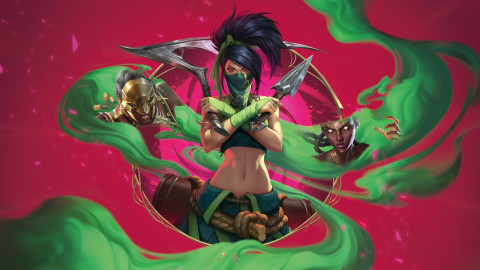
As a gaming reporter who holds the distinction of being one of the most mediocre players across the several beats I cover, I approached NVIDIA's Reflex technology with a mix of intrigue and skepticism. When I first learned of it, I thought of it as something equivalent to state-of-the-art equipment in sports — the most high-tech frame in cycling, or the newest pair of Jordan's in basketball. In other words, products that might have use for professionals, but are nearly meaningless for amatuers. The question was: Could this innovation genuinely improve my gaming experience, or was it just another technological embellishment targeted at the upper echelons of competitive gamers? After engaging with NVIDIA's Reflex for several weeks and discussing its capabilities extensively with a Product Manager from NVIDIA, my initial doubts have been transformed into endorsement.
NVIDIA Reflex is engineered to tackle one of the more insidious problems in high-stakes gaming—system latency, which is the delay between a player's action and the game's response on the screen. This delay can be critical in fast-paced games where a fraction of a second can determine the outcome of a match. NVIDIA advertises that Reflex can reduce system latency by up to 35% in supported games, thereby enhancing responsiveness and player control.
My hands-on experience began with Counter-Strike 2, an ambitious update to the classic Counter-Strike: Global Offensive, now built on the more robust and visually advanced Source 2 engine. Playing on an RTX 4070 card, the immediate impression was the sheer smoothness of the gameplay; movements and actions felt fluid and instantaneous. This was not just an incremental improvement— it was like stepping into a new realm of gaming where I had near-perfect control over my actions, reminiscent of the tight and precise mechanics of platformers like Super Meat Boy or Super Mario Odyssey, where the game's design demands and rewards precision and where every error is unquestionably the player's own.
During a discussion with NVIDIA's Product Manager, I learned more about how Reflex enhances gaming performance. The technology works by minimizing the GPU render queue and effectively synchronizing the CPU and GPU tasks to avoid processing bottlenecks, which typically manifest as latency. This synchronization is especially crucial in reducing latency-related gameplay disadvantages, such as the infamous 'peeker’s advantage', where players who initiate an action like peering around a corner can spot and react to opponents before being detected themselves.
Curious to test Reflex in my preferred gaming genre, I switched to playing Dota 2, a MOBA where strategic play and timely reactions are key. Although MOBAs don't demand as much of the split-second reflexes characteristic of competitive shooters, they do benefit from crisp, responsive controls, particularly during complex team fights and high-pressure late-game situations. With Reflex enabled, Dota 2 gameplay was subtly yet noticeably smoother. Actions felt more connected and immediate, and this was particularly evident when Reflex was turned off, as the game then seemed a step slower, almost cumbersome by comparison.
The NVIDIA representative emphasized that while Reflex is currently most impactful in shooters, its potential across other genres, including MOBAs and real-time strategy games, is significant. As game developers continue to integrate Reflex into more titles, the technology's benefits are expected to permeate a broader spectrum of gaming experiences, potentially transforming player expectations about responsiveness and control in video games (please input for League of Legends).
After an extensive period of testing, it's clear that NVIDIA Reflex isn't just for professional gamers or those with cutting-edge setups; it offers tangible benefits to anyone looking for a smoother and more responsive gaming experience. This technology marks a significant step forward in reducing the frustration of latency, making gameplay feel more direct and controlled, which enhances overall engagement and enjoyment.
In conclusion, my experience and detailed discussions have completely reshaped my perspective on NVIDIA Reflex. This technology provides more than just competitive edges—it enriches the gaming experience for players at all levels, making games more immersive and enjoyable. Looking ahead, the expansion of Reflex into more gaming genres, particularly MOBAs, is an exciting prospect. I'm eager to see how its broader adoption will continue to revolutionize gaming responsiveness. As Reflex technology evolves, it promises to set new standards in gaming performance, ensuring that players have the best possible experience, dictated solely by their skills and strategic choices. Now, when I miss a crucial skill shot or fail to dodge an attack, I know it's all on me—my system is no longer the scapegoat.
-

I write. I rap. I run. That’s pretty much it.
Sort by:
Comments :0





